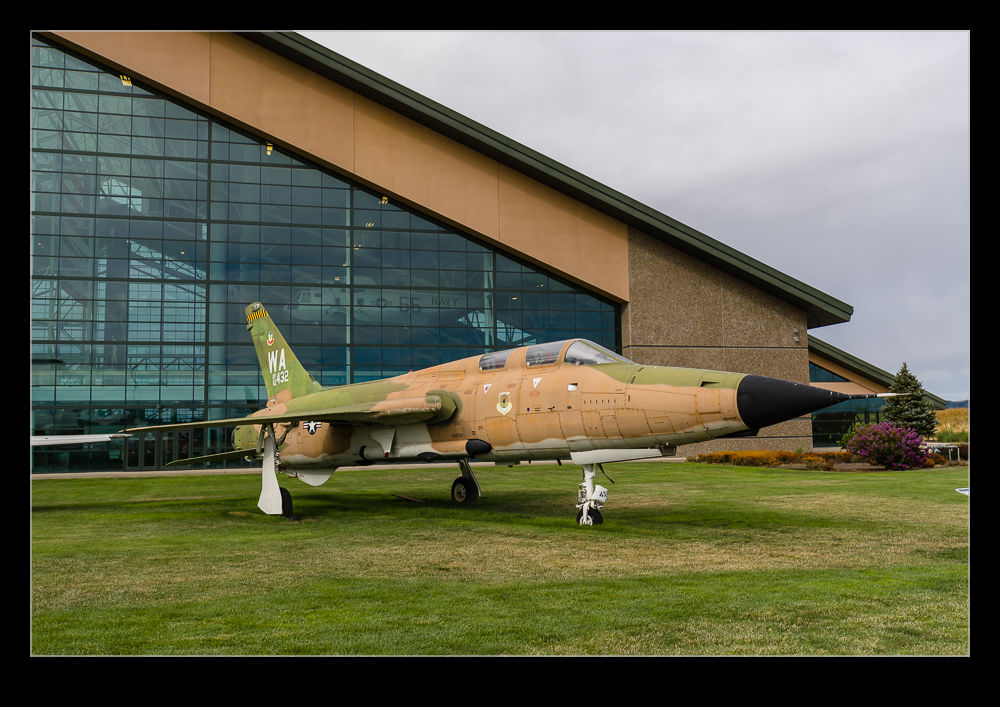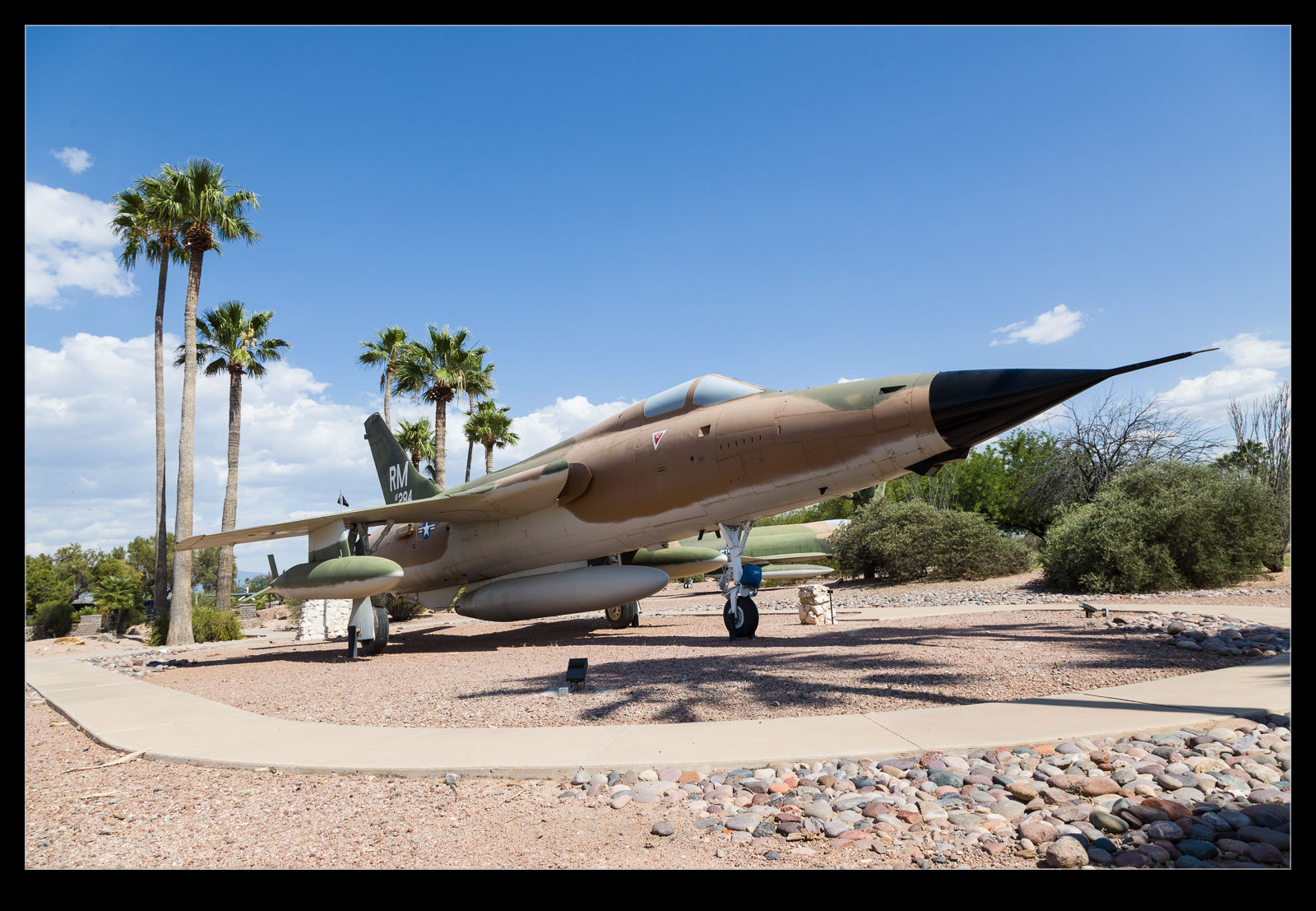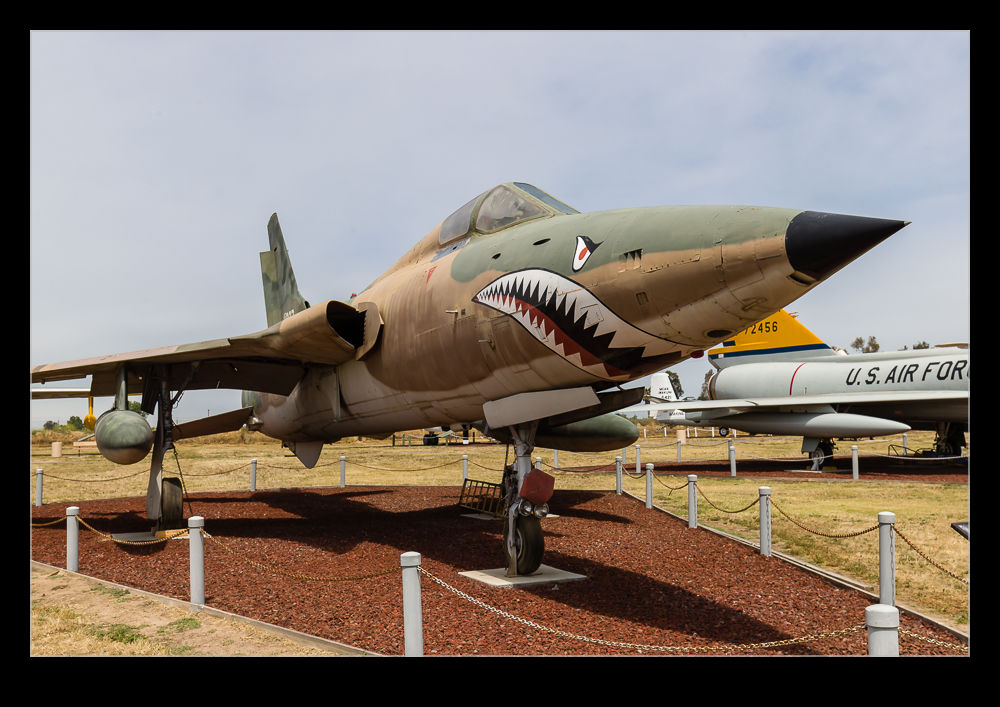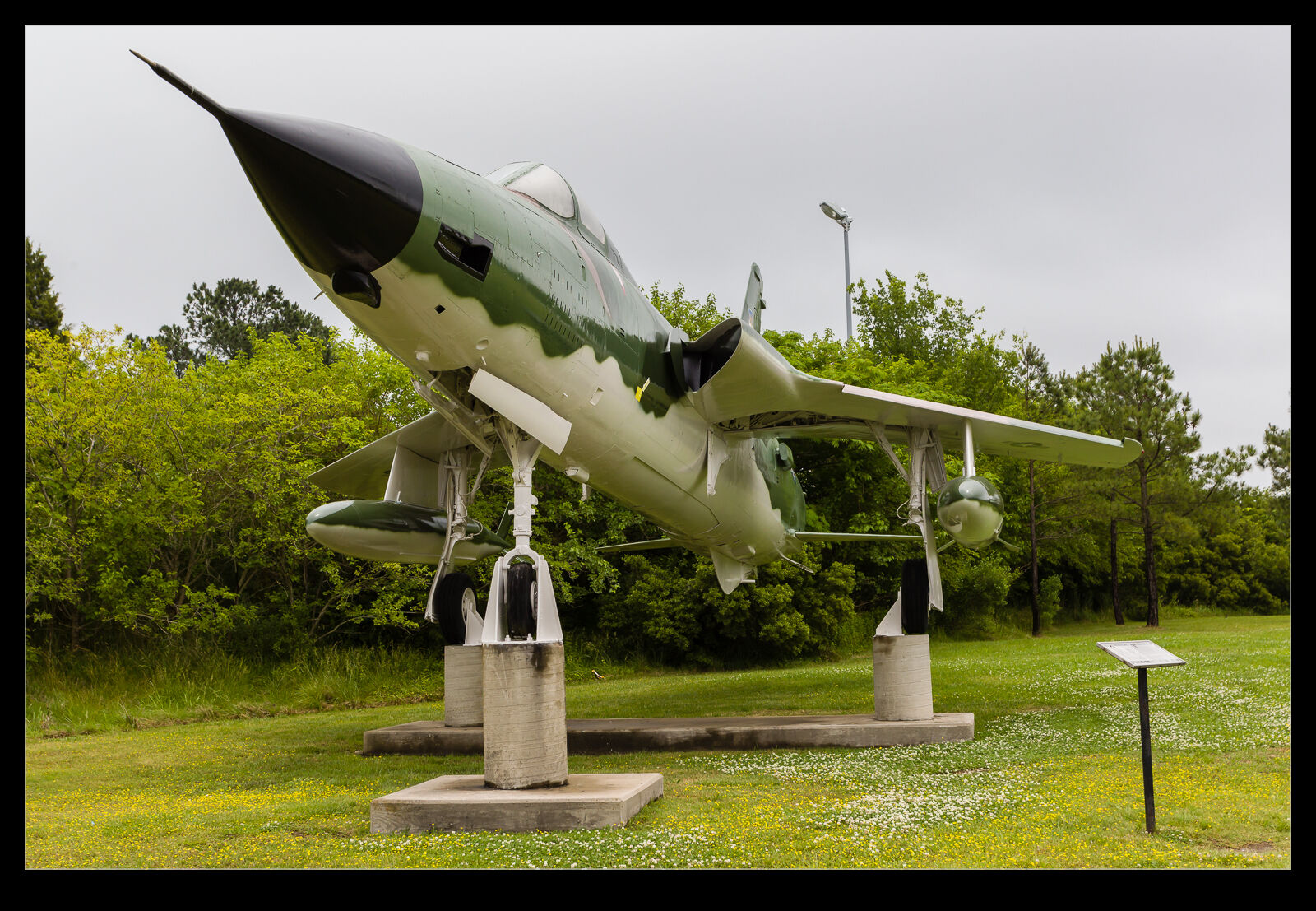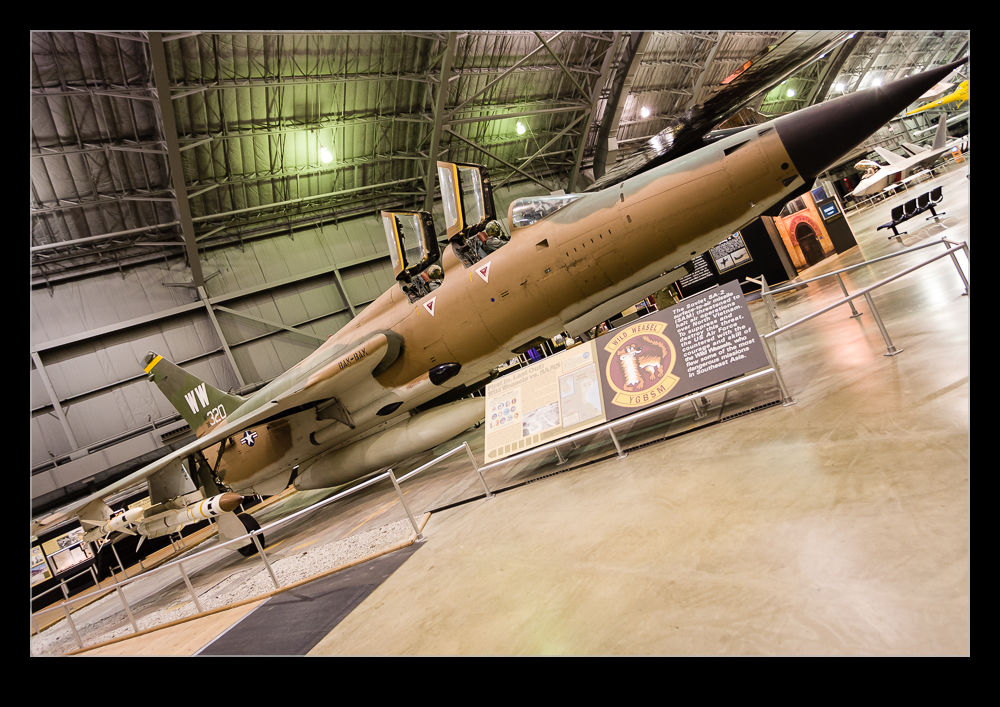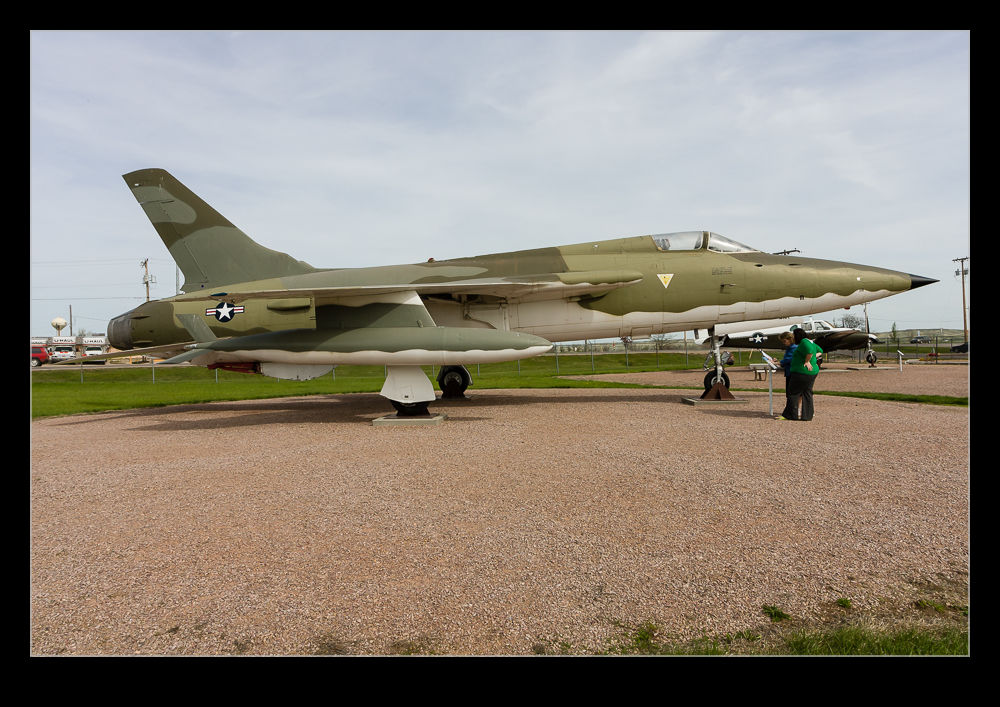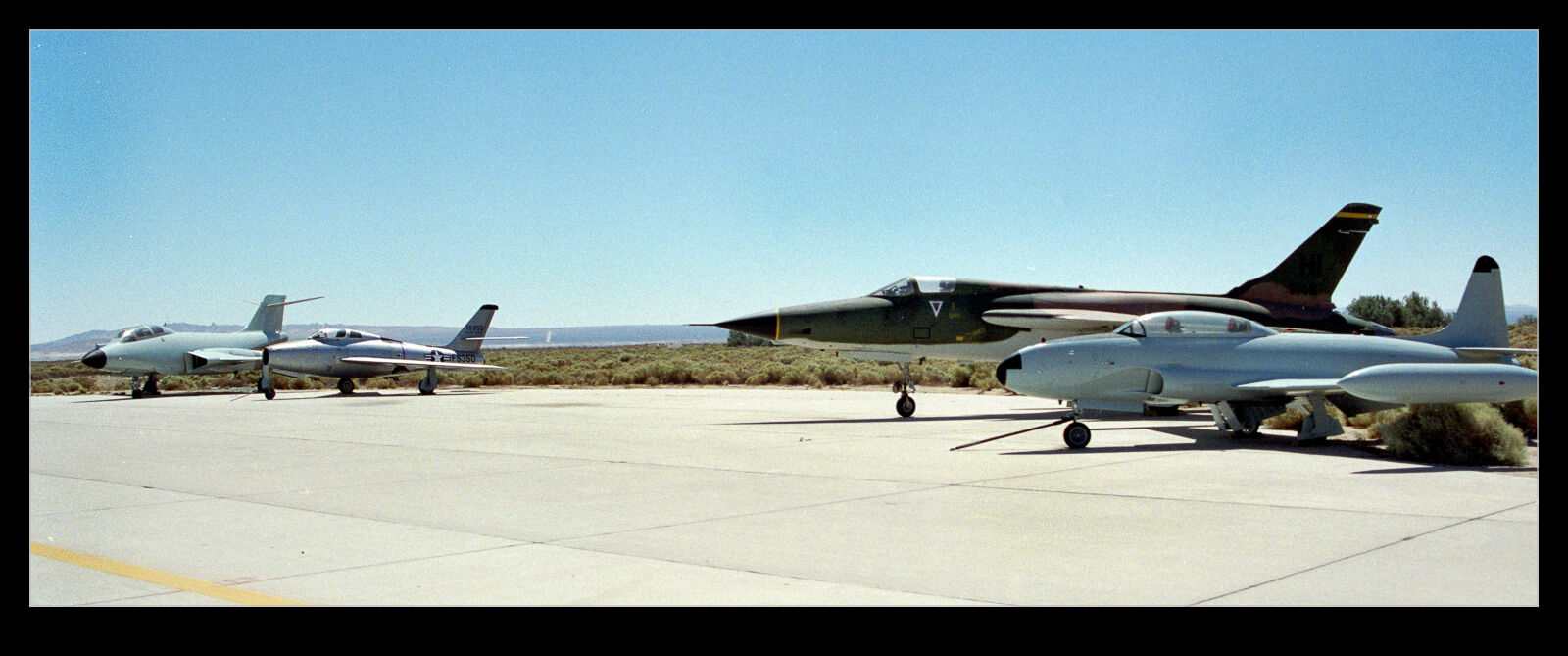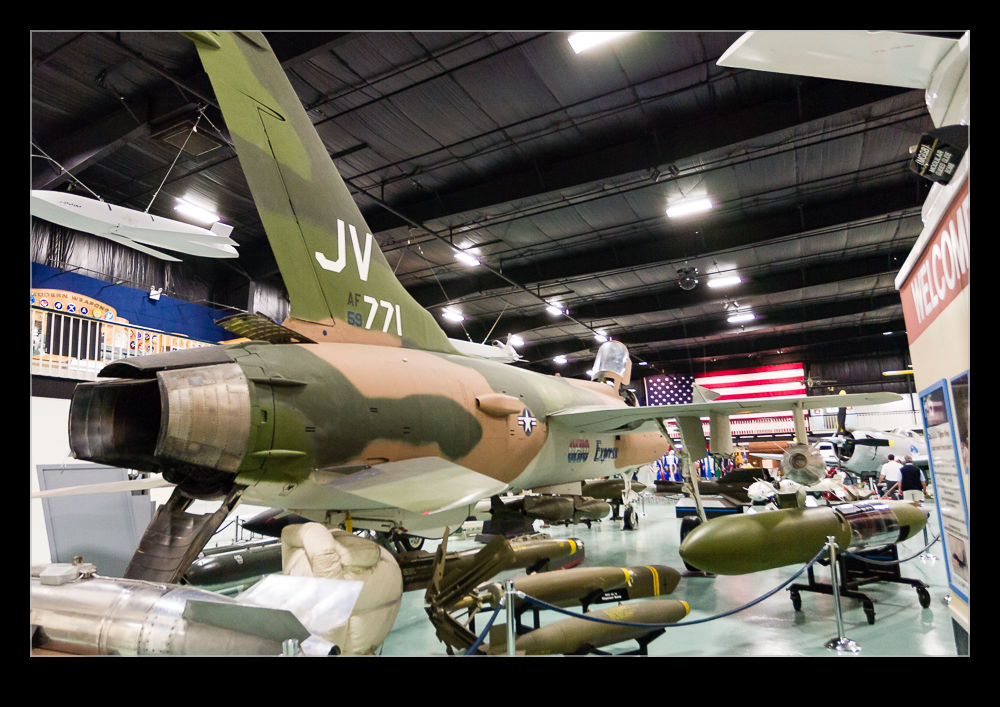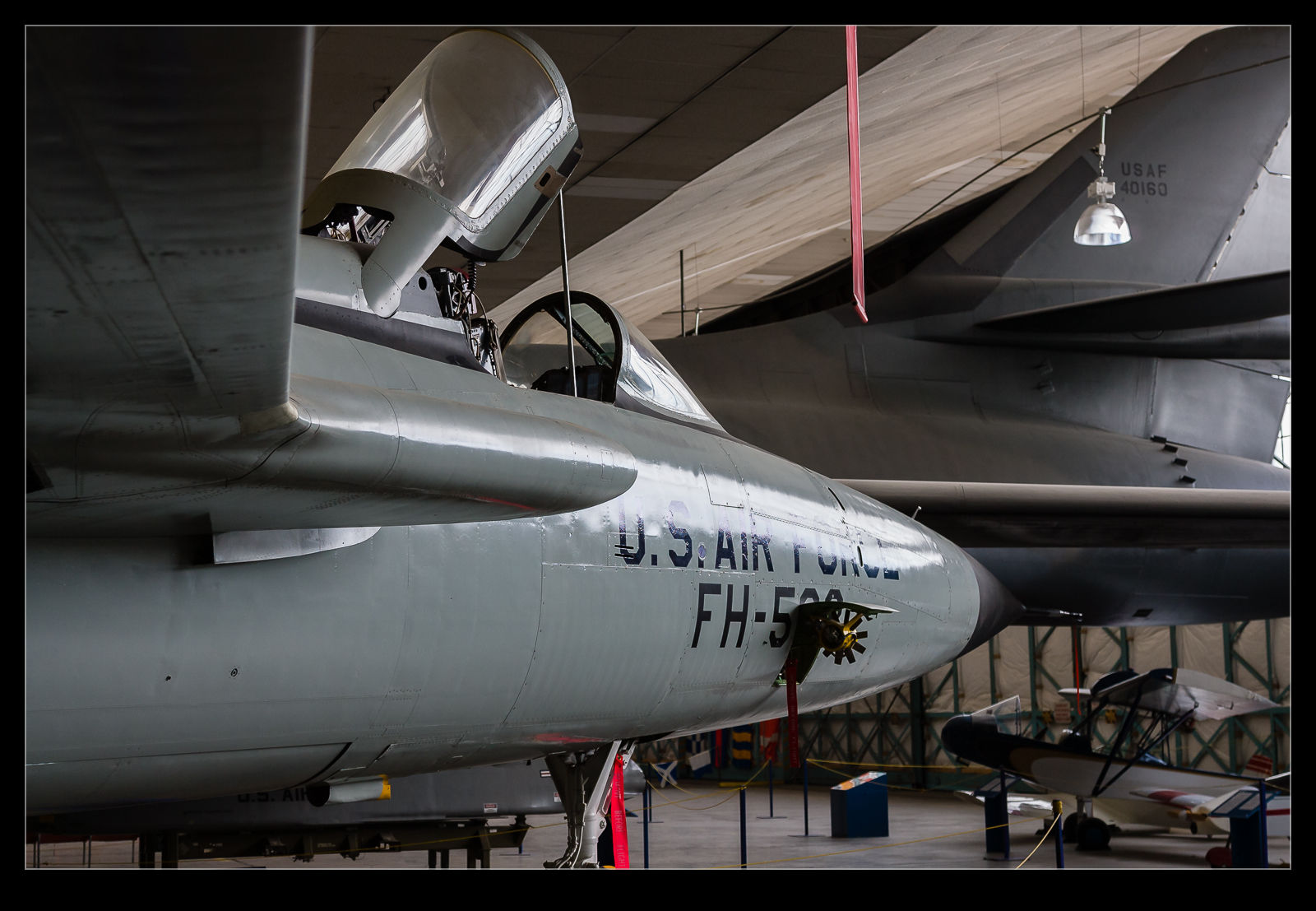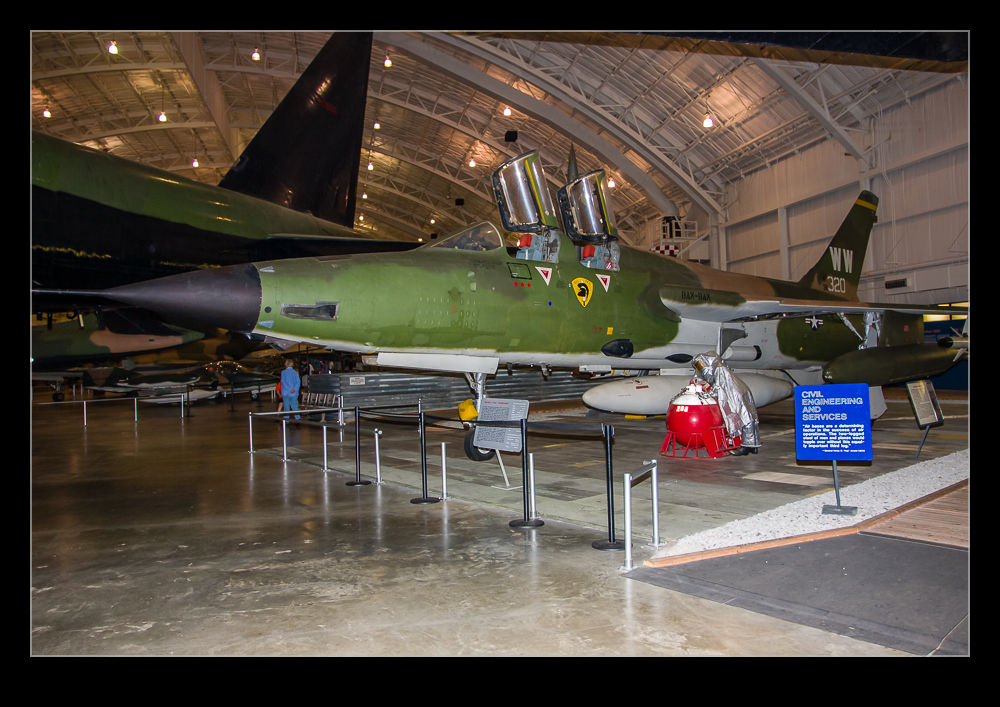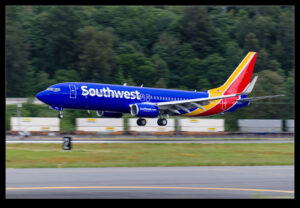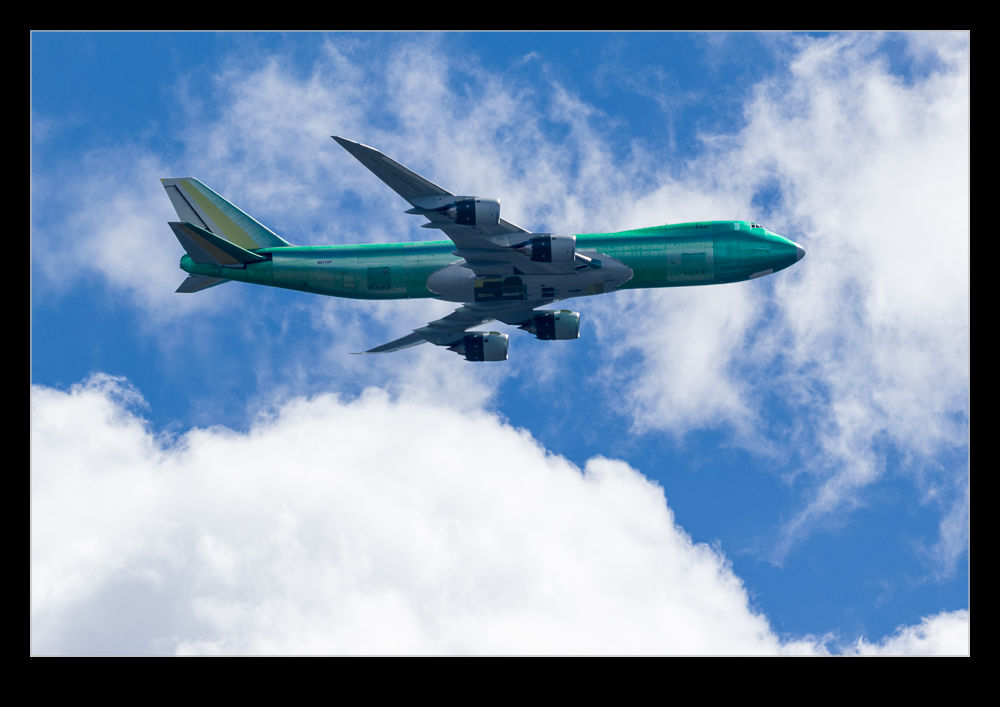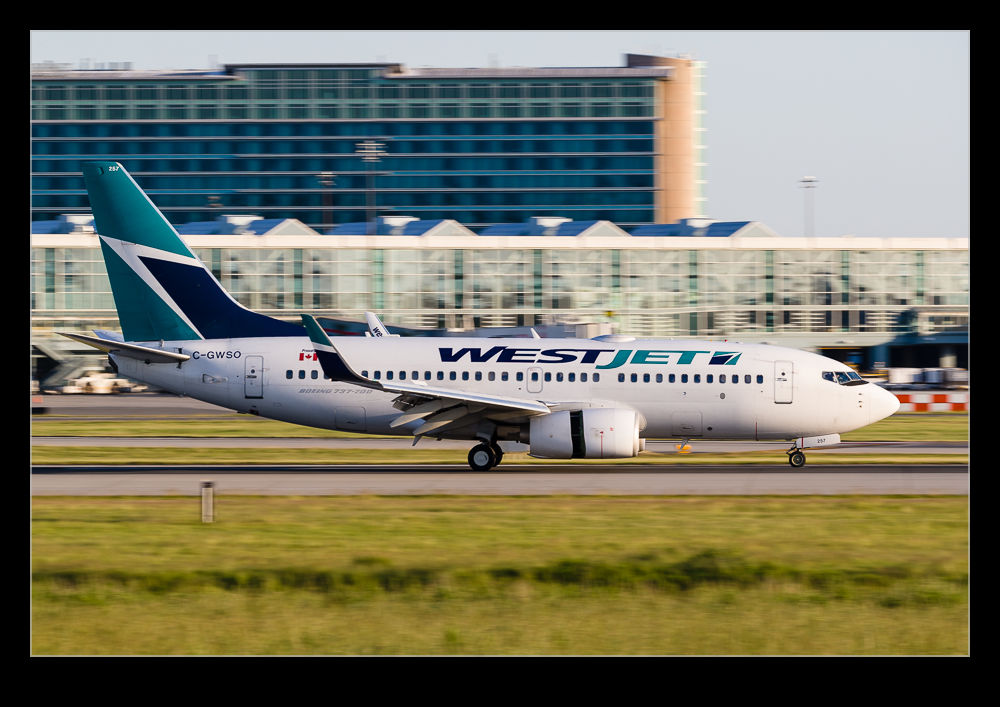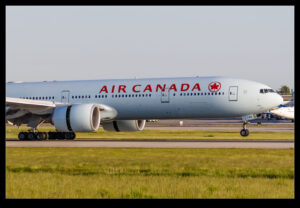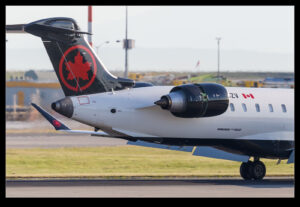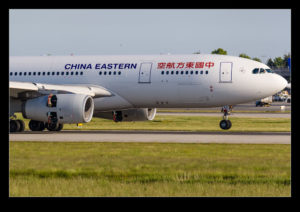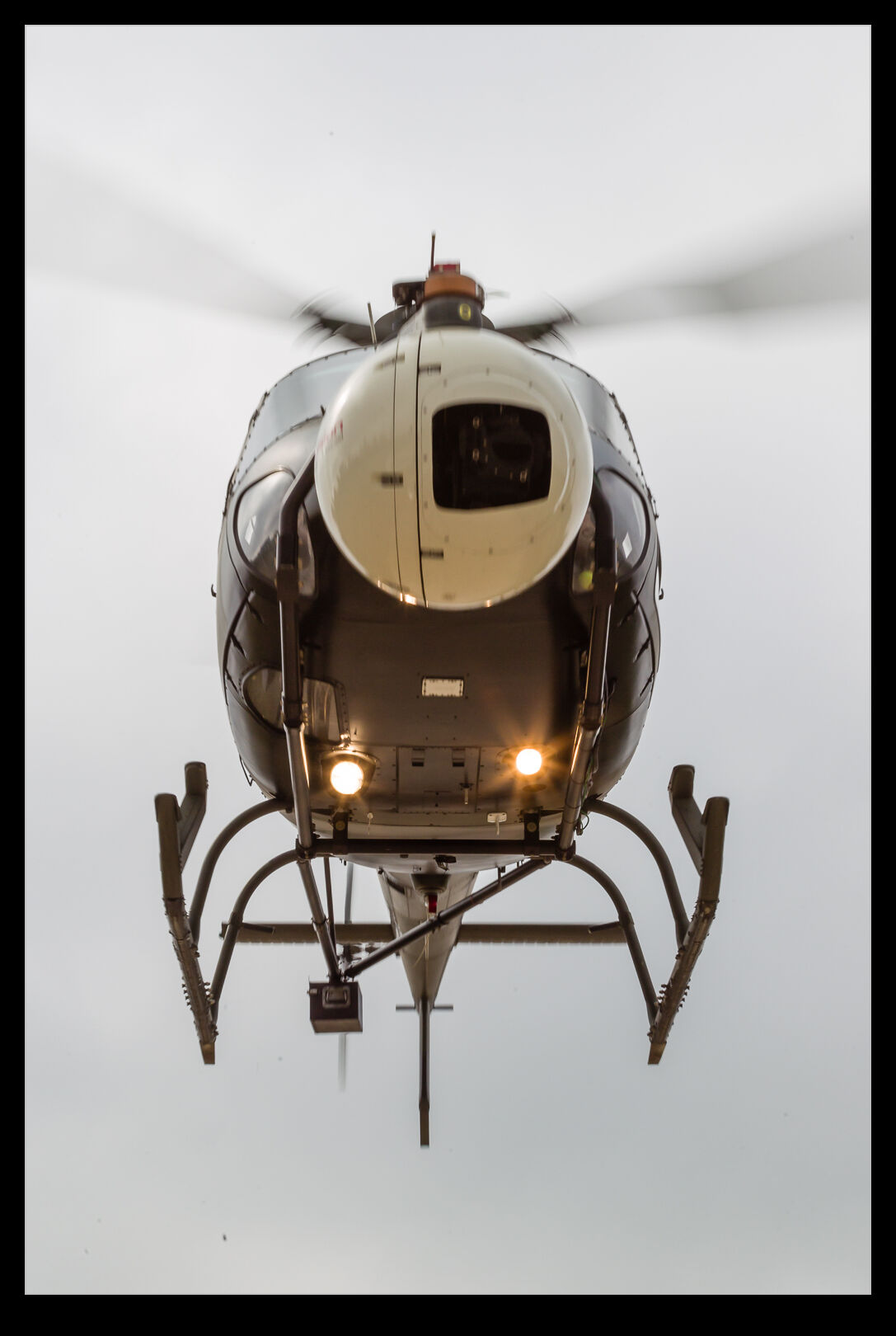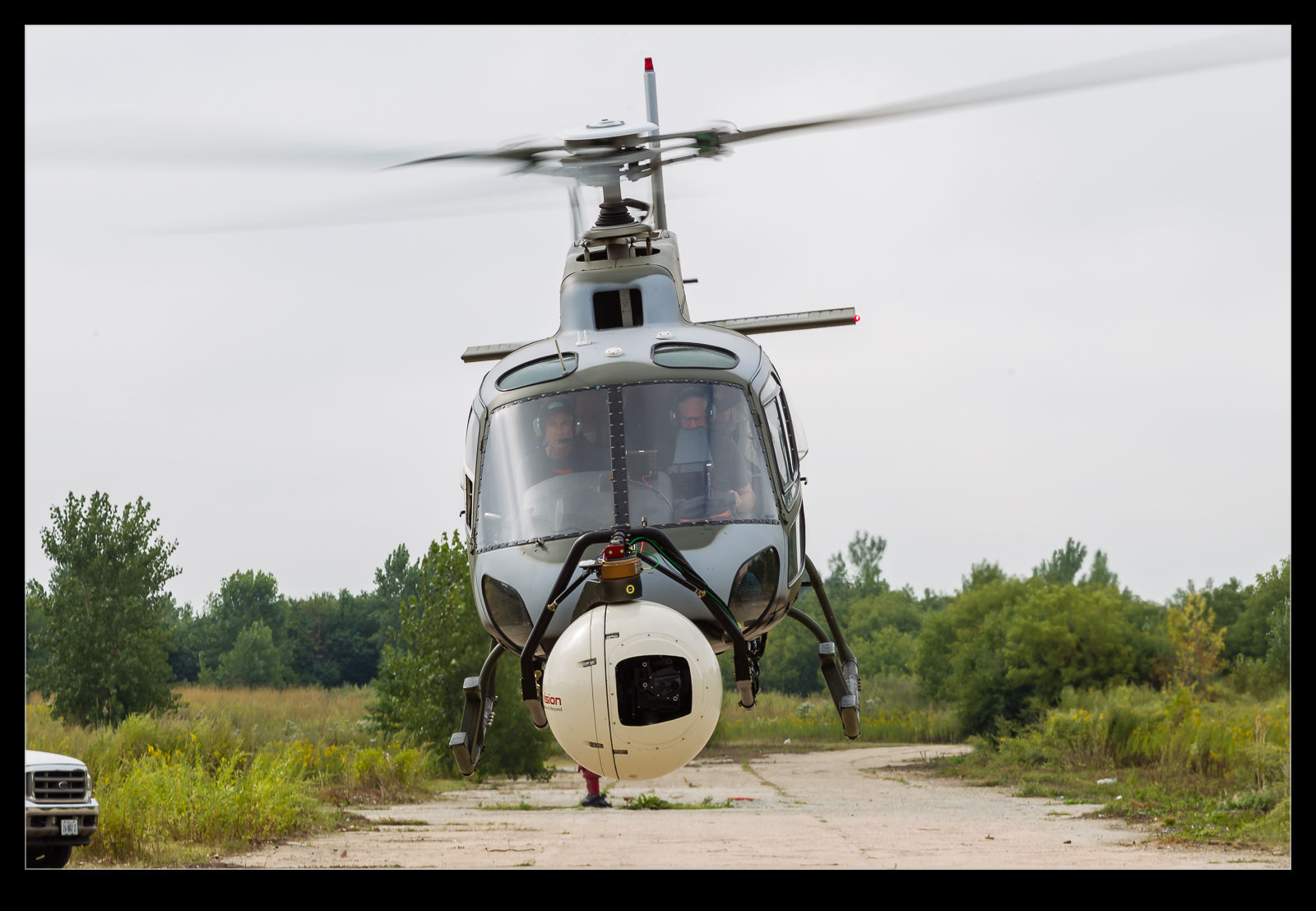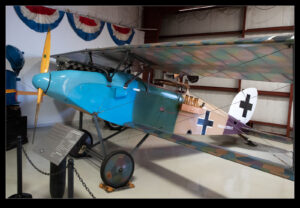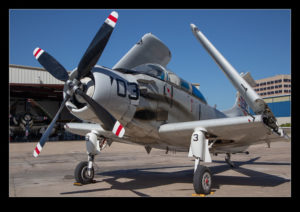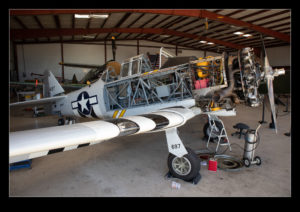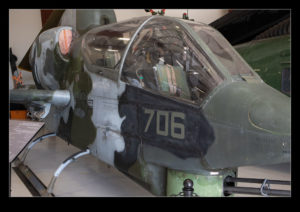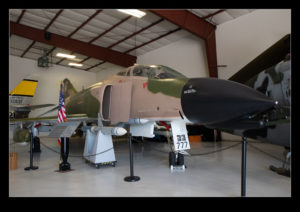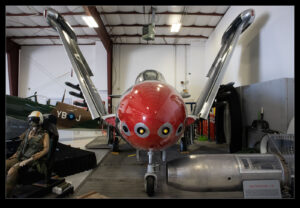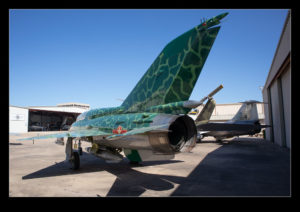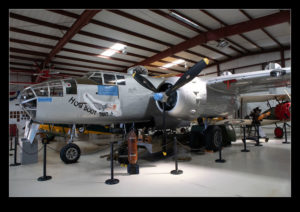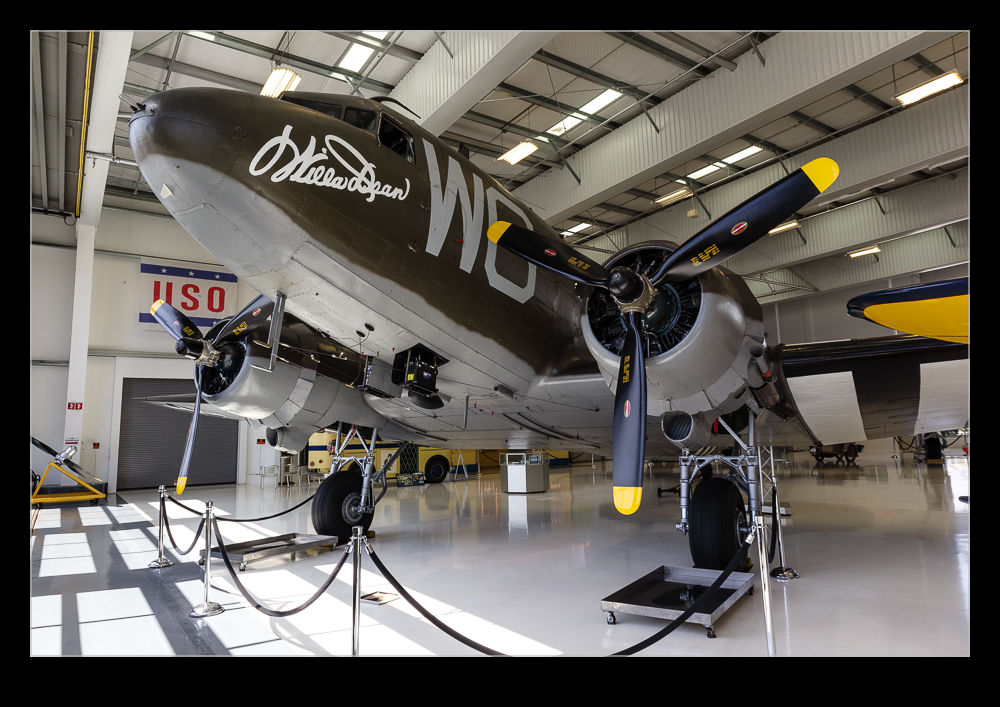After posting a picture of a Thud, I decided to see how many of the ones listed on Wikipedia as preserved in the US I had photographed. Here they all are in their Thud-loveliness.
Tag Archives: aircraft
Practice Panning to Make it Different at BFI
 I was killing some time at Boeing Field and the light was dropping fast. There was a variety of traffic inbound but nothing that counted as terribly unusual and not, therefore, something I desperately cared about getting a good shot with. As a result, I decided to play around with low shutter speeds to see how it changed the look of the shots at a familiar location, to see how the sharpness varied across the airframe and to see just how badly may panning skills have degraded. Needless to say, the results were pretty mixed. The worst of the lot will clearly never see the light of day but here you can see some of the shots that I was okay with. The conclusion from the output is that I should go a bit lower in shutter speed to increase the sense of speed.
I was killing some time at Boeing Field and the light was dropping fast. There was a variety of traffic inbound but nothing that counted as terribly unusual and not, therefore, something I desperately cared about getting a good shot with. As a result, I decided to play around with low shutter speeds to see how it changed the look of the shots at a familiar location, to see how the sharpness varied across the airframe and to see just how badly may panning skills have degraded. Needless to say, the results were pretty mixed. The worst of the lot will clearly never see the light of day but here you can see some of the shots that I was okay with. The conclusion from the output is that I should go a bit lower in shutter speed to increase the sense of speed.
Combat Air Takes Up Some Customers
 I got a little distracted while I was at Lyons Air Museum. Out on the ramp were some SF-260s belonging to a company called Combat Air. The company shared space with the museum and, while I was walking around, a couple of customers rolled up for their flights. They were going off in a two ship sortie. I don’t know what they had planned. They may have been heading out to do some aeros or maybe they were going to try and see which one was the dogfighting star.
I got a little distracted while I was at Lyons Air Museum. Out on the ramp were some SF-260s belonging to a company called Combat Air. The company shared space with the museum and, while I was walking around, a couple of customers rolled up for their flights. They were going off in a two ship sortie. I don’t know what they had planned. They may have been heading out to do some aeros or maybe they were going to try and see which one was the dogfighting star.
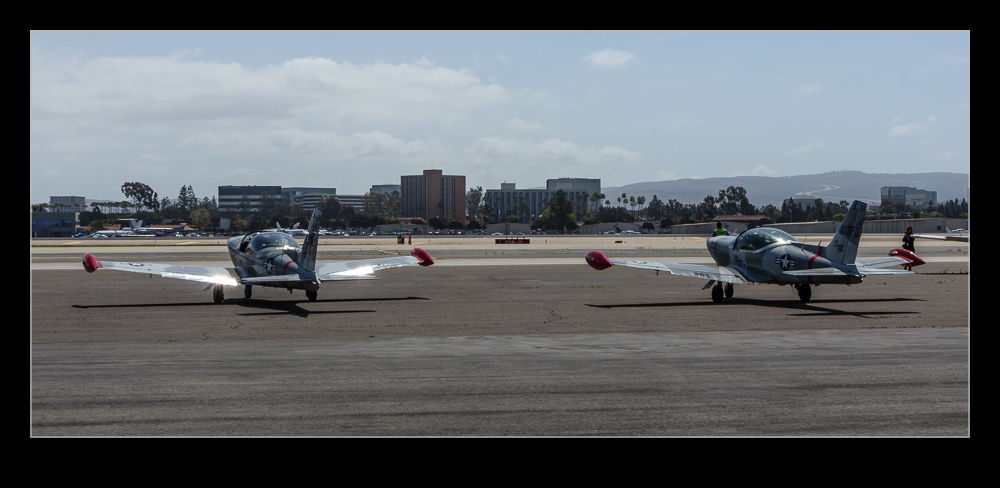 The 260 is a cracking little plane. From a young age, this was a plane I wanted – something that has some serious performance that is enough for some militaries but is also available for anyone to buy (provided you have a fair bit of spare cash). In piston form it is pretty good stuff but I also believe that you can get them with a turboprop which I imagine goes like stink. Anyhow, the two customers were suited up, strapped in and they taxied out together. We were advised that they would probably come our way on departure so I hung around for a while. They had a fair taxi to the departure end and then needed to hold for a while but eventually they came into view and turned in formation over the top of the hangar. I went back to looking around the museum so I hope they had a fun flight.
The 260 is a cracking little plane. From a young age, this was a plane I wanted – something that has some serious performance that is enough for some militaries but is also available for anyone to buy (provided you have a fair bit of spare cash). In piston form it is pretty good stuff but I also believe that you can get them with a turboprop which I imagine goes like stink. Anyhow, the two customers were suited up, strapped in and they taxied out together. We were advised that they would probably come our way on departure so I hung around for a while. They had a fair taxi to the departure end and then needed to hold for a while but eventually they came into view and turned in formation over the top of the hangar. I went back to looking around the museum so I hope they had a fun flight.
RAT Noise
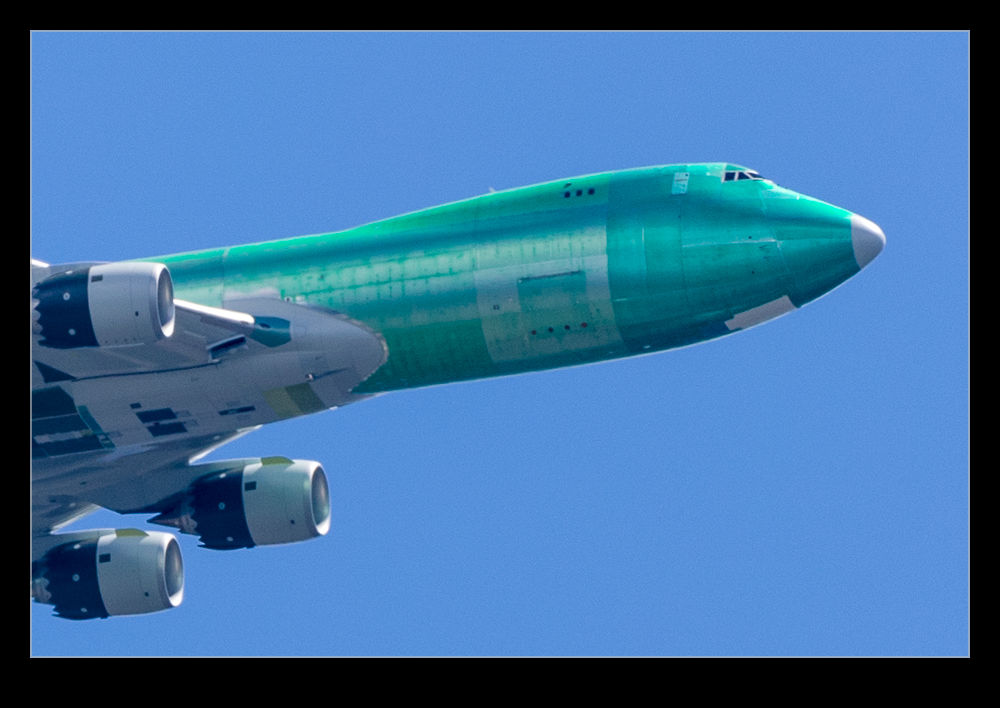 UPS is buying a bunch of 747 freighters at the moment. I have shot a few of them including examples here and here. The route back to Paine Field takes them across our area when the pattern being flown is a northerly. I grabbed the camera to see this primer example heading over. As the plane flew by, there was a lot more noise than would be normal for a jet on the approach and it had a vibrational element which made me think the RAT might be deployed. Sure enough, when I checked the shots, the RAT could be seen under the wing route. This is a normal flight test requirement so nothing to be concerned about but this was the first time I had heard a jet at speed with the RAT out and I was surprised how loud it was.
UPS is buying a bunch of 747 freighters at the moment. I have shot a few of them including examples here and here. The route back to Paine Field takes them across our area when the pattern being flown is a northerly. I grabbed the camera to see this primer example heading over. As the plane flew by, there was a lot more noise than would be normal for a jet on the approach and it had a vibrational element which made me think the RAT might be deployed. Sure enough, when I checked the shots, the RAT could be seen under the wing route. This is a normal flight test requirement so nothing to be concerned about but this was the first time I had heard a jet at speed with the RAT out and I was surprised how loud it was.
Take Your Pick When Refueling
 The F-105 Thunderchief (or Thud) is a beast of a plane. Sadly I never got to seem them in action. One is parked outside at Cavanaugh in Addison TX. Its camo is a bit bleached by the Texas sun (it was just over 100 degrees the day I arrived and that was towards the end of the afternoon). The thing that caught my eye, though, was the refueling receptacle or, more specifically, receptacles. USAF aircraft have the flying boom refueling system. This was not always the case and jets like the F-100 had flight refueling probes for the hose and drogue method.
The F-105 Thunderchief (or Thud) is a beast of a plane. Sadly I never got to seem them in action. One is parked outside at Cavanaugh in Addison TX. Its camo is a bit bleached by the Texas sun (it was just over 100 degrees the day I arrived and that was towards the end of the afternoon). The thing that caught my eye, though, was the refueling receptacle or, more specifically, receptacles. USAF aircraft have the flying boom refueling system. This was not always the case and jets like the F-100 had flight refueling probes for the hose and drogue method.
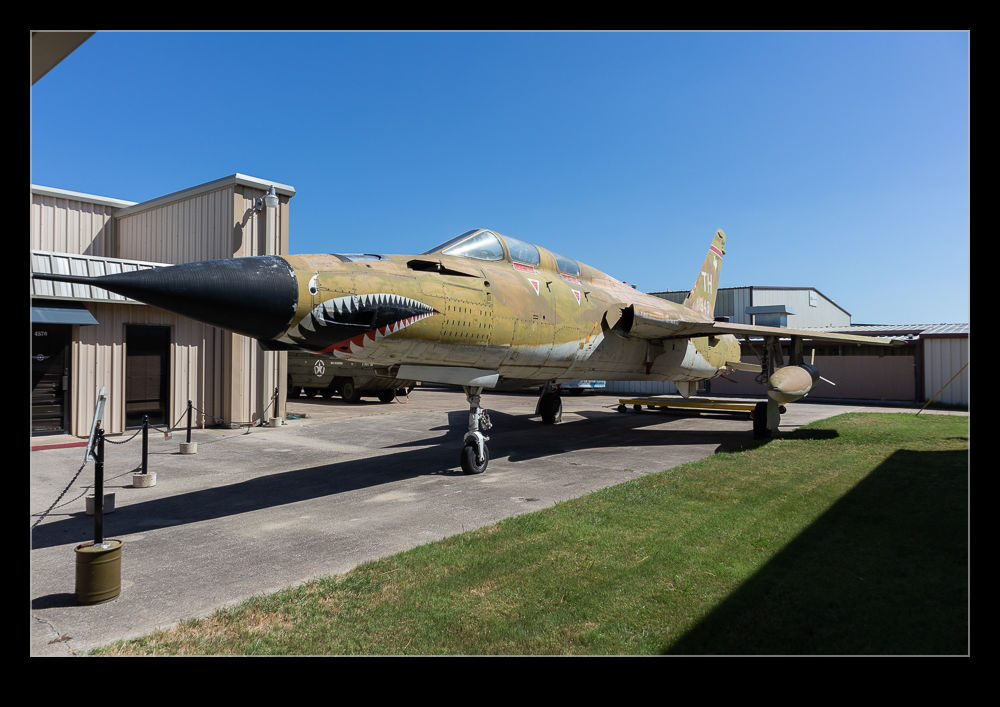 I assume that the Air Force was in a transition mode when the F-105 was being designed so they had both. On the upper side of the nose there is a ramp for boom refueling to take place. Below that on the port side is a retractable refueling probe for hose and drogue use. I didn’t realize that any jets had been built for both (aside from the UK and French E-3s which are a bit larger and more able to accommodate the extra kit. I wonder which one was more regularly used since the techniques for each type differ.
I assume that the Air Force was in a transition mode when the F-105 was being designed so they had both. On the upper side of the nose there is a ramp for boom refueling to take place. Below that on the port side is a retractable refueling probe for hose and drogue use. I didn’t realize that any jets had been built for both (aside from the UK and French E-3s which are a bit larger and more able to accommodate the extra kit. I wonder which one was more regularly used since the techniques for each type differ.
Cascades or Buckets?
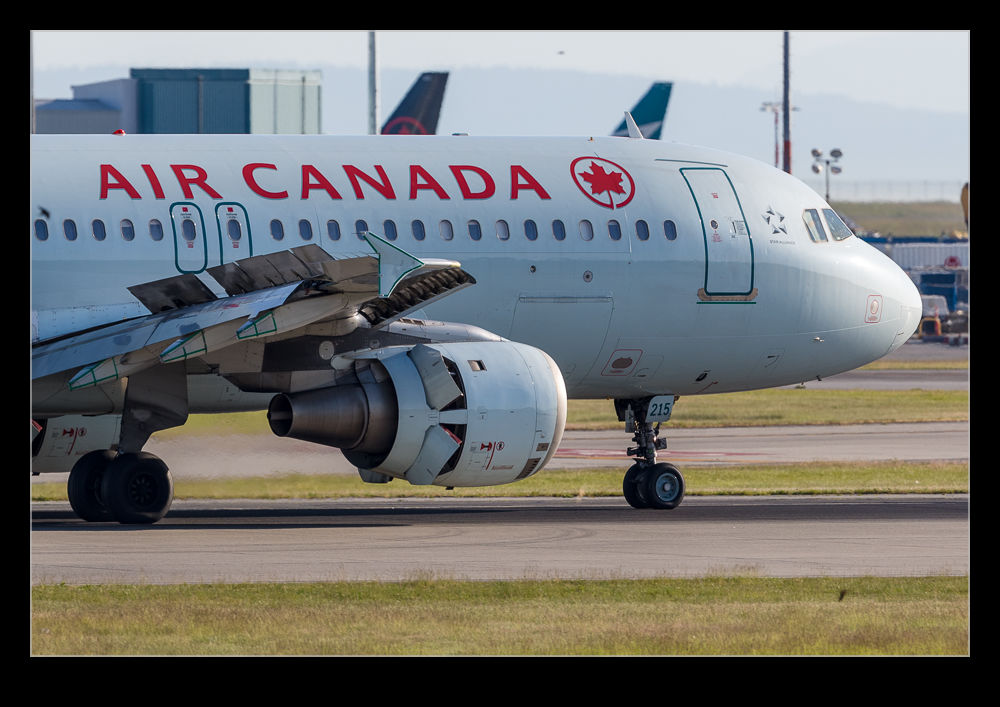 Watching a bunch of arrivals at Vancouver, I got a lot of shots of aircraft reversing thrust. Current jets fall into one of two categories. Cascade reversers or bucket reversers. The bucket reversers aren’t quite as obvious as those fitted to the old 737-200s where they clamped across the whole exhaust but the effect is much the same. Bucket reversers look like they are doing the job to me. They hang out and you can imagine the flow being turned around as they power up. Cascade reversers are far more subtly as the nacelle translates aft and the flow is redirected out of the based of fins that is now exposed. I imagine they are similarly effective but I have no data to back that up. If someone knows more, please let me know as I am genuinely interested to find out.
Watching a bunch of arrivals at Vancouver, I got a lot of shots of aircraft reversing thrust. Current jets fall into one of two categories. Cascade reversers or bucket reversers. The bucket reversers aren’t quite as obvious as those fitted to the old 737-200s where they clamped across the whole exhaust but the effect is much the same. Bucket reversers look like they are doing the job to me. They hang out and you can imagine the flow being turned around as they power up. Cascade reversers are far more subtly as the nacelle translates aft and the flow is redirected out of the based of fins that is now exposed. I imagine they are similarly effective but I have no data to back that up. If someone knows more, please let me know as I am genuinely interested to find out.
Astar Over My Head
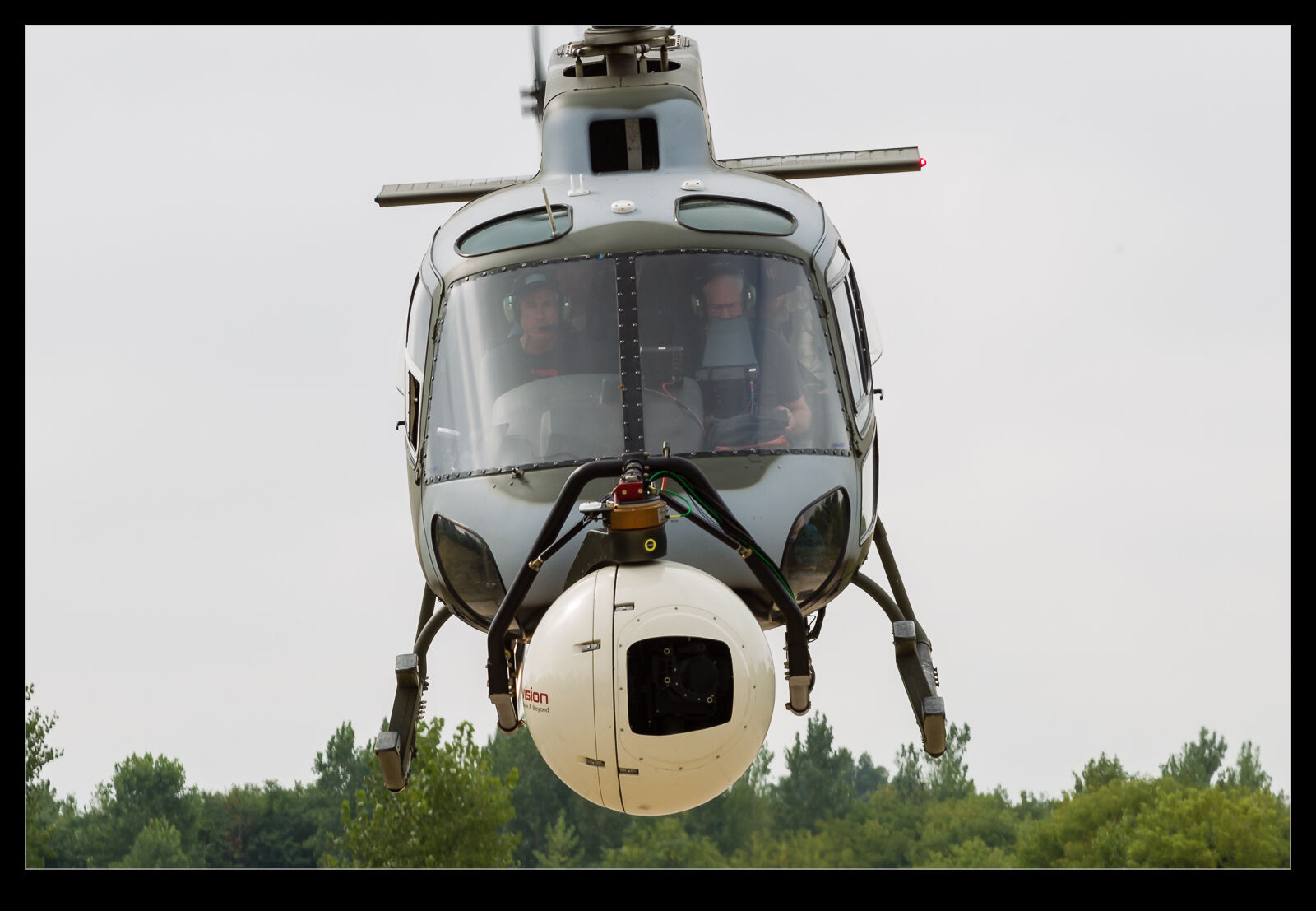 These shots are from a few years ago. I had the privilege to spend a day with the late Alan Purwin during the filming for one of the Transformers movies in Chicago. I got to fly with them on some of the shoot but I also was on the ground when they went off on part of the filming. I put myself directly ahead of the Astar when they took off and Alan buzzed me. I noticed when going through the images that the cameraman was tracking me with the stabilized mount on the nose as they flew over the top.
These shots are from a few years ago. I had the privilege to spend a day with the late Alan Purwin during the filming for one of the Transformers movies in Chicago. I got to fly with them on some of the shoot but I also was on the ground when they went off on part of the filming. I put myself directly ahead of the Astar when they took off and Alan buzzed me. I noticed when going through the images that the cameraman was tracking me with the stabilized mount on the nose as they flew over the top.
Cavanaugh Air Museum
 I have been to Addison in Texas a few times recently for work. The trips have been pretty much in and out with little spare time so I have not been able to check out the Cavanaugh Air Museum before. On a recent visit, though, my flight got in at a time that meant I could get there for the final 45 minutes that they were open. Not a lot of time but better than nothing and the temperature was over 100 degrees so being out for too long was not going to be fun!
I have been to Addison in Texas a few times recently for work. The trips have been pretty much in and out with little spare time so I have not been able to check out the Cavanaugh Air Museum before. On a recent visit, though, my flight got in at a time that meant I could get there for the final 45 minutes that they were open. Not a lot of time but better than nothing and the temperature was over 100 degrees so being out for too long was not going to be fun!
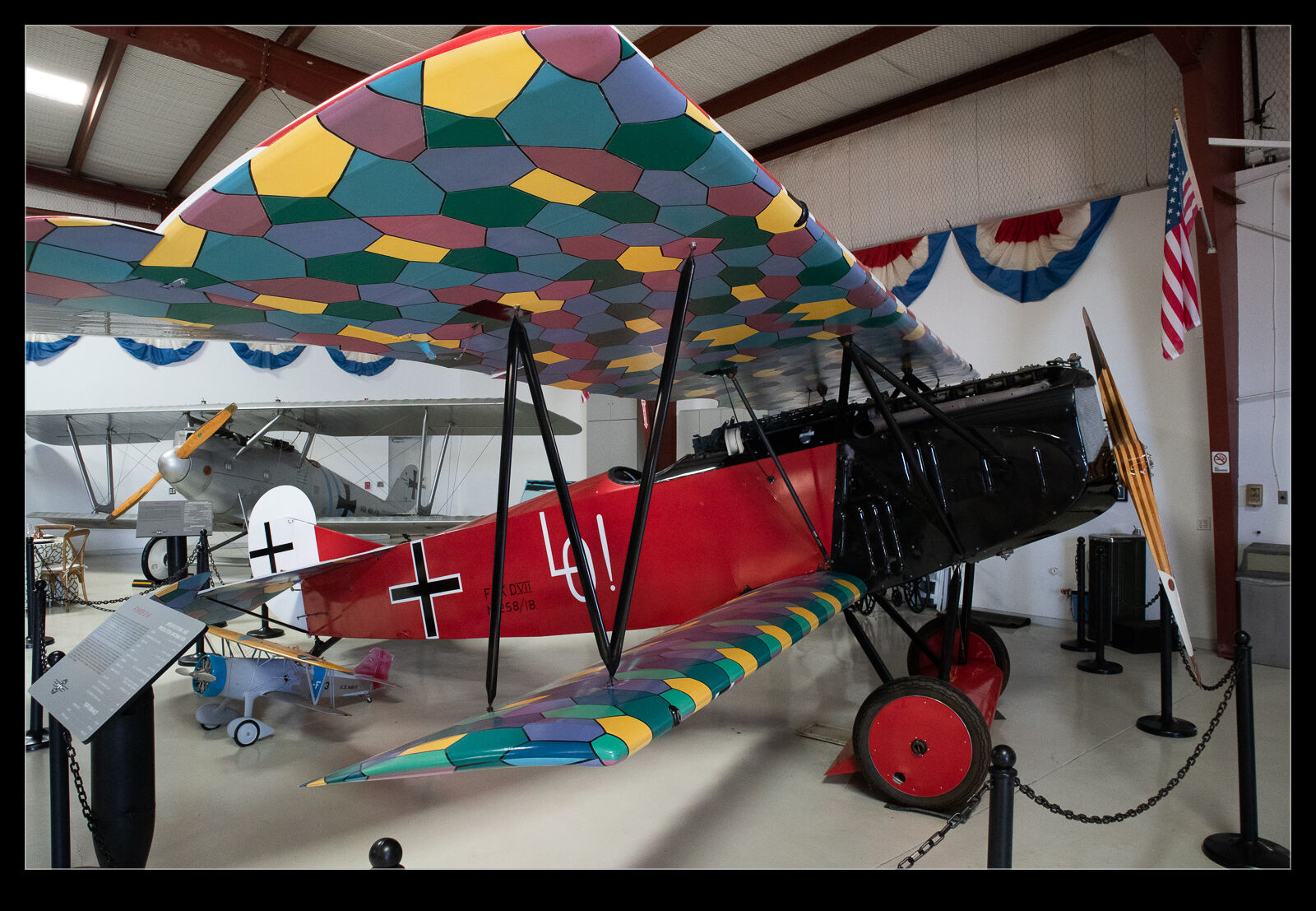 It was a quick trip around but still fun. Some nice examples of aircraft in the hangars and a few interesting bits outside. The intense sun meant they were hard to photograph and I wasn’t going to hang around out there too long. The ramp was reflecting the heat even more so it was roasting out there. Lots of nice stuff but the F-104 and the pair of A-1 Skyraiders were probably the high points for me. The painting gallery was also well worth a look and it was in the air conditioning so definitely a welcome spot.
It was a quick trip around but still fun. Some nice examples of aircraft in the hangars and a few interesting bits outside. The intense sun meant they were hard to photograph and I wasn’t going to hang around out there too long. The ramp was reflecting the heat even more so it was roasting out there. Lots of nice stuff but the F-104 and the pair of A-1 Skyraiders were probably the high points for me. The painting gallery was also well worth a look and it was in the air conditioning so definitely a welcome spot.
A Pair of Douglas’s Finest
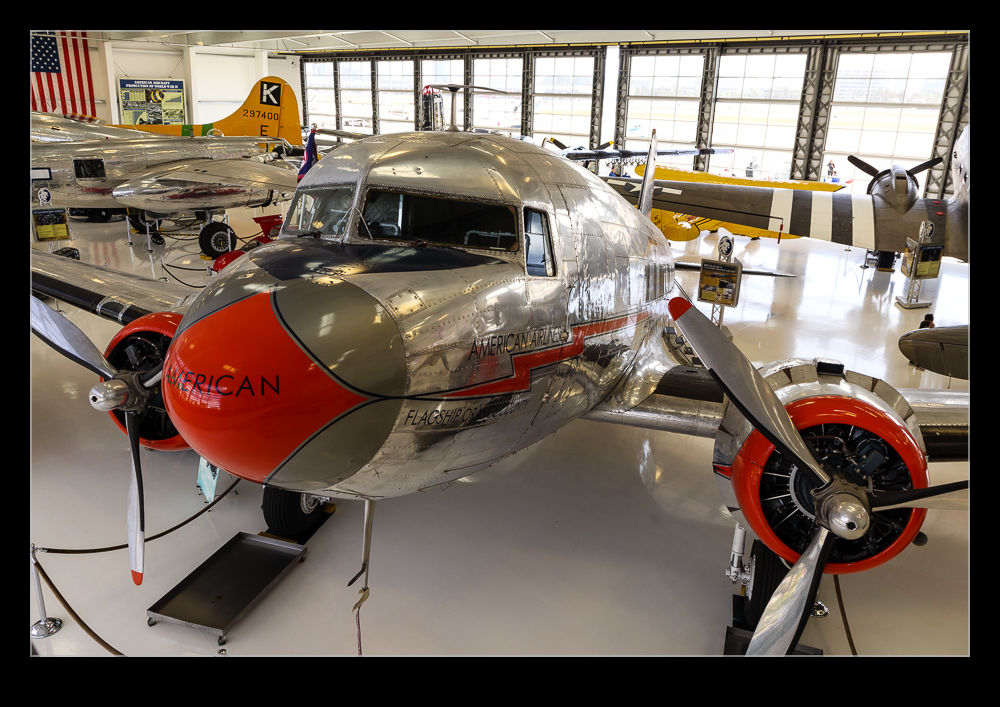 The Lyons Museum included a few larger types in the hangar. At one end they had both a DC-3 and a C-47. While notionally different types, they are in principle the same aircraft and one that Douglas churned out in huge numbers. The DC-3 was configured in a slightly more comfortable way than the C-47 though. Troop transport was not a luxury business. Get as many people and bits to where you are going as you can. The paying passengers were a more demanding crowd and the interior is designed to make them feel like they were being treated accordingly. Either way, they are both great looking aircraft.
The Lyons Museum included a few larger types in the hangar. At one end they had both a DC-3 and a C-47. While notionally different types, they are in principle the same aircraft and one that Douglas churned out in huge numbers. The DC-3 was configured in a slightly more comfortable way than the C-47 though. Troop transport was not a luxury business. Get as many people and bits to where you are going as you can. The paying passengers were a more demanding crowd and the interior is designed to make them feel like they were being treated accordingly. Either way, they are both great looking aircraft.
G650 Passenger Watches Me Watching Them
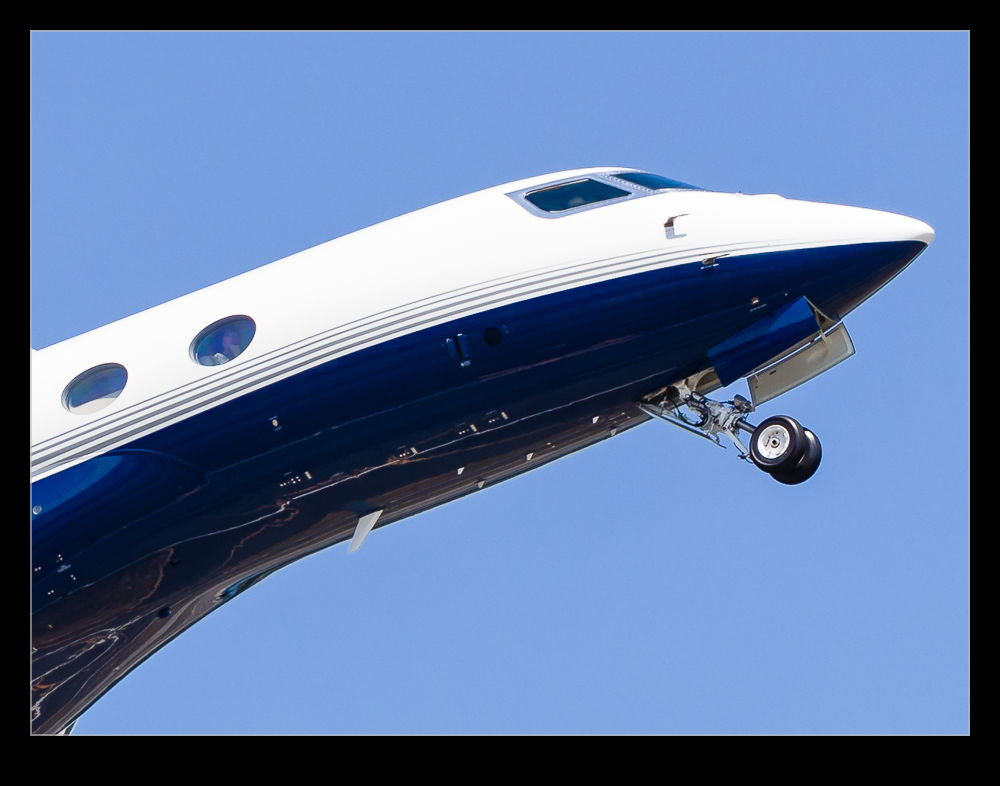 The G650 was a plane that got off to a good start. The combination of space and range made it a popular choice amongst those that have $60-70m to drop on a plane. Recently, things have been a bit quieter as the competition has ramped up but the deliveries this year have perked up. This one was departing out of Boeing Field and, as I zoomed in to check the sharpness of the shot, I could see the passenger in the cabin who seemed to be looking back at me. She didn’t have a camera, though, so I am the only one with a shot of the encounter!
The G650 was a plane that got off to a good start. The combination of space and range made it a popular choice amongst those that have $60-70m to drop on a plane. Recently, things have been a bit quieter as the competition has ramped up but the deliveries this year have perked up. This one was departing out of Boeing Field and, as I zoomed in to check the sharpness of the shot, I could see the passenger in the cabin who seemed to be looking back at me. She didn’t have a camera, though, so I am the only one with a shot of the encounter!
